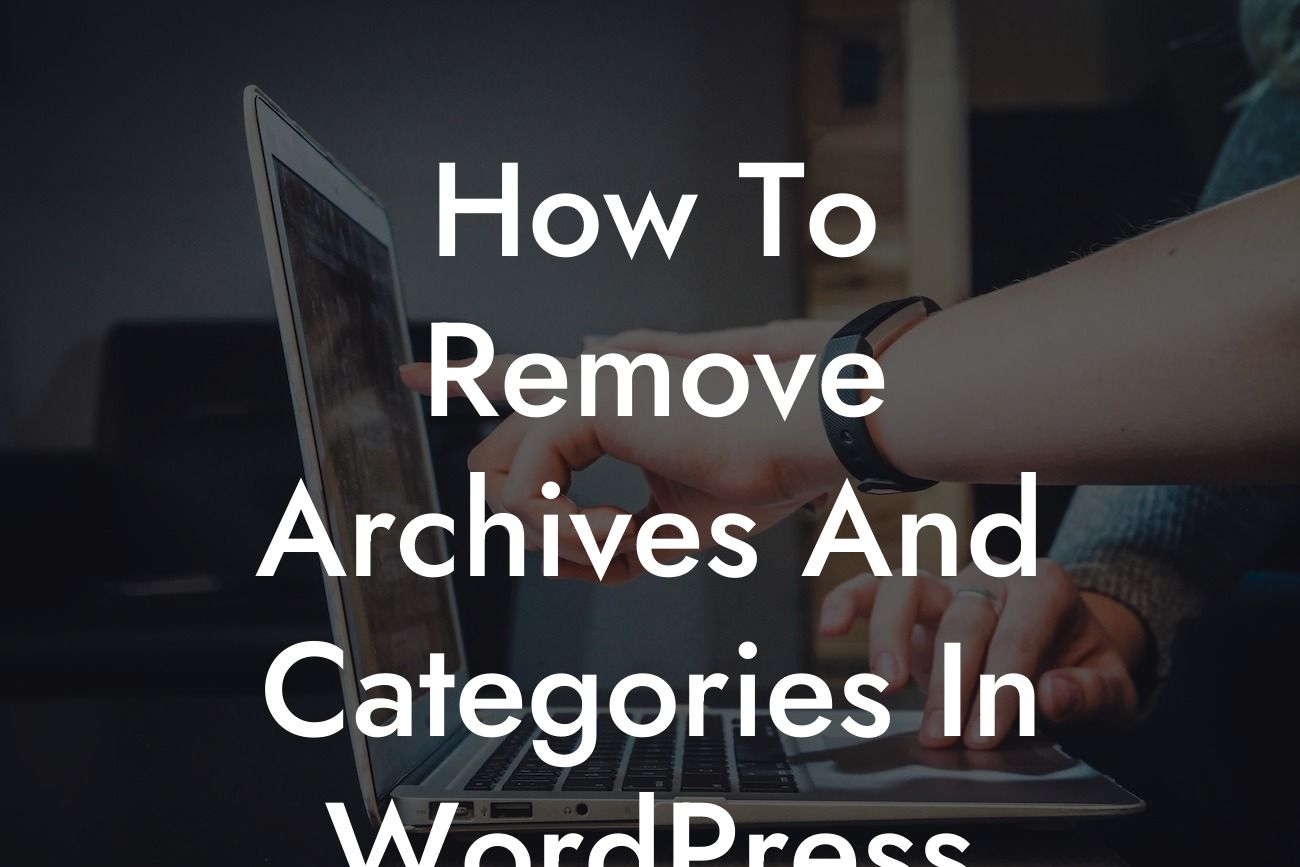Are you a small business owner or entrepreneur looking to optimize your WordPress website? One common issue faced by WordPress users is the clutter caused by archives and categories. These unnecessary elements can affect the user experience and make it harder for your visitors to find the information they need. In this article, we will guide you through the steps to remove archives and categories in WordPress, helping you streamline your website and enhance its functionality.
Archives and categories are default features of WordPress that allow you to organize your content into different sections. However, they can create a maze-like structure, making it difficult for users to navigate your site. To remove archives and categories, follow these steps:
1. Disable Archives: WordPress automatically generates archive pages based on the date of publication. Although these archives can be useful for older blogs, they might serve no purpose for your small business website. To disable them, go to your WordPress dashboard, navigate to Settings > Reading, and under the "Archives" section, select the option "Discourage search engines from indexing this site." This will prevent search engines from listing your archive URLs and discourage users from accessing them.
2. Remove Categories: Categories are a helpful way to organize your blog posts, but they might not be necessary for other website sections. To remove categories, go to your WordPress dashboard, click on "Posts," and select "Categories." From here, you can either delete the existing categories or hide them from your website by unchecking the "Display in post meta" option.
How To Remove Archives And Categories In Wordpress Example:
Looking For a Custom QuickBook Integration?
Let's say you run a small e-commerce business selling handmade jewelry. Your website has a blog section where you share DIY tips and trends in the jewelry industry. While categories like "Tutorials" and "Trends" are relevant for blog posts, they might not make sense for your product pages. By removing categories from your product pages, you can declutter the navigation menu and create a seamless shopping experience for your customers.
Congratulations! You have successfully removed archives and categories from your WordPress website. By streamlining your site's structure, you have improved the overall user experience and made it easier for visitors to find relevant content. Don't stop here, though! Explore other helpful guides on DamnWoo to further enhance your online presence and take your small business or entrepreneurial venture to new heights. And don't forget to check out our awesome WordPress plugins that can supercharge your website's functionality. Share this article with others who might find it helpful and empower them to optimize their WordPress sites too!













